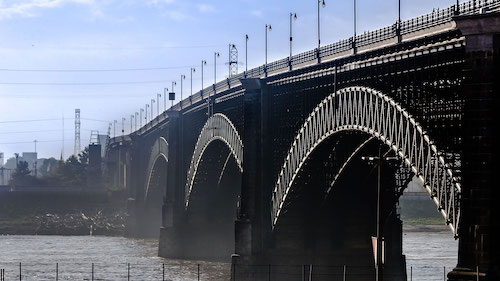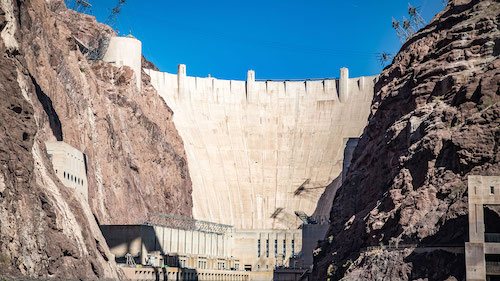Communiqué
See those who scoffed at the laws of nature and defied the naysayers in “10 Modern Marvels that Changed America” Oct. 23 at 9 pm
< < Back to10 Modern Marvels that Changed America
Saturday, October 23, 2021, 9:00 PM
Celebrate those who have scoffed at the laws of nature and defied the naysayers — and sometimes even gravity — by undertaking these fantastic feats of engineering. Each story includes a fun physics lesson and a tale of human folly, beginning at the Erie Canal, a 363-mile long man-made waterway that was built in the 19th century by thousands of laborers using primitive hand tools. Learn how professional engineers connected our growing nation by building magnificent bridges, intricate rail networks, and a continent-wide system of freeways. Discover the extreme measures that engineers have taken to deliver water from distant rivers to our kitchen sinks. It’s easy to take these modern marvels for granted with today’s easy access to roads, bridges, and drinking water. But behind many of our daily conveniences was a clever engineer — and a remarkable story. Featured, in chronological order, are:

Erie Canal, New York (1825) – Built with little more than horses and sheer manpower, the Erie Canal fulfilled the long-time dream of a waterway that could link the Atlantic Ocean with the fertile farmland of America’s interior.
Roebling Bridge, Cincinnati, OH (1867) – John Roebling may be famous for the Brooklyn Bridge, but his first creation came 16 years earlier with this suspension bridge that connected Ohio and Kentucky — a free state and a union state in the midst of the Civil War.
Transcontinental Railroad (1869) – Discover the complex negotiations that went into the creation of the railroad that would shrink the time it took to cross the nation from six months to one week — and was built mostly by Chinese laborers.
Eads Bridge, St. Louis, MO (1874) – In the age of the railroad, the Mississippi River had become a barrier to train traffic, until an ingenious young man named James Eads created the first steel bridge, ushering in a new steel age for engineering, architecture, and manufacturing.

Reversal of the Chicago River, Chicago IL (1900) – As Chicago grew into a major metropolis, its river became an open sewer that fed directly into the city’s water supply. It took a crafty engineer named Ellis Chesbrough to come up with a startling plan: reverse the flow of the river to the Mississippi, toward the city’s longtime rival, St. Louis.
Holland Tunnel, New York, NY (1927) – The first underwater tunnel for cars had to solve a seemingly impossible, life-or-death challenge: build a tunnel with enough ventilation to prevent it from becoming a deadly gas chamber.
Hoover Dam, Nevada (1936) – It was designed to do the impossible: stop the mighty Colorado River dead in its tracks and provide water and power for the growing cities of Southern California. The dam also employed thousands in the midst of the Great Depression.
Colorado River Aqueduct, California (1939) – Providing much of the drinking water for southern California, the aqueduct – another Depression-era public works project and the brainchild of L.A.’s controversial water department superintendent William Mulholland – travels from the river, across the desert and five mountain peaks before descending into Los Angeles.
Interstate Highway System (1956) – Plans for an interstate highway had been around since the Depression but finally came to fruition under President Eisenhower, who had seen the value of good roads as he led troops through Germany during WWII. This undertaking – the largest engineering project in human history – would also accelerate an exodus to suburbia.
New Orleans Risk Reduction System, New Orleans, LA (2005) – Following the deadly devastation of Hurricane Katrina, the Army Corps of Engineers created a system of safeguards – including a two-mile long, 26-foot high barrier, pumping stations and closable canals – designed to help the city survive increasingly violent storms and rising sea levels and serve as a model for other coastal cities around the world.

